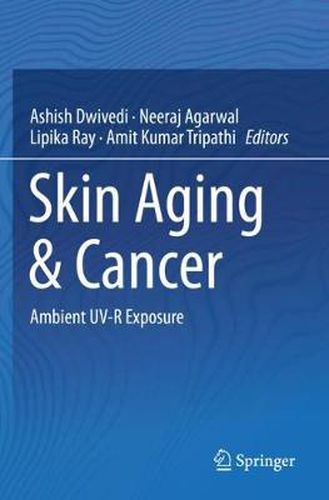Readings Newsletter
Become a Readings Member to make your shopping experience even easier.
Sign in or sign up for free!
You’re not far away from qualifying for FREE standard shipping within Australia
You’ve qualified for FREE standard shipping within Australia
The cart is loading…






This book summarizes the potent effect of ultraviolet radiation (UVR) on the photoaging and cancer formation. Skin is the largest human organ which continually reconstructs itself to ensure its viability, integrity, and ability to provide protection for the body. This protection can be compromised by the aging of the skin which ultimately promotes skin inflammation, impaired wound repair, and increased risk of skin cancer. The book entails mechanistic insights into the UVR-induced immunomodulation and DNA damage in the skin to delineate the pathogenesis, and develop novel ways for prevention of photoaging of the skin cells. It also elucidates the potential of nanotechnology in the treatment of skin cancer. Further, it discusses the bioinformatics approaches to understand the molecular mechanism of photoaging and cancer formation.
$9.00 standard shipping within Australia
FREE standard shipping within Australia for orders over $100.00
Express & International shipping calculated at checkout
This book summarizes the potent effect of ultraviolet radiation (UVR) on the photoaging and cancer formation. Skin is the largest human organ which continually reconstructs itself to ensure its viability, integrity, and ability to provide protection for the body. This protection can be compromised by the aging of the skin which ultimately promotes skin inflammation, impaired wound repair, and increased risk of skin cancer. The book entails mechanistic insights into the UVR-induced immunomodulation and DNA damage in the skin to delineate the pathogenesis, and develop novel ways for prevention of photoaging of the skin cells. It also elucidates the potential of nanotechnology in the treatment of skin cancer. Further, it discusses the bioinformatics approaches to understand the molecular mechanism of photoaging and cancer formation.